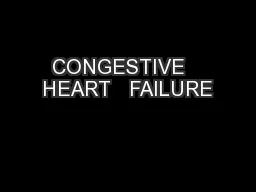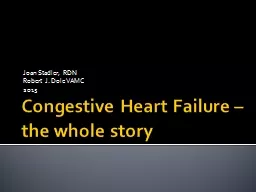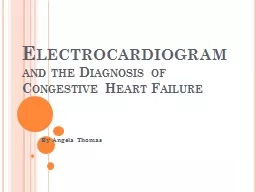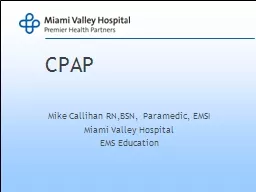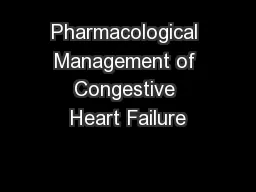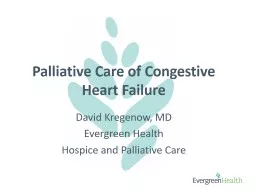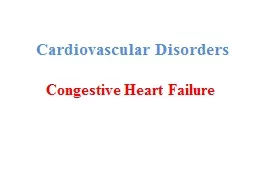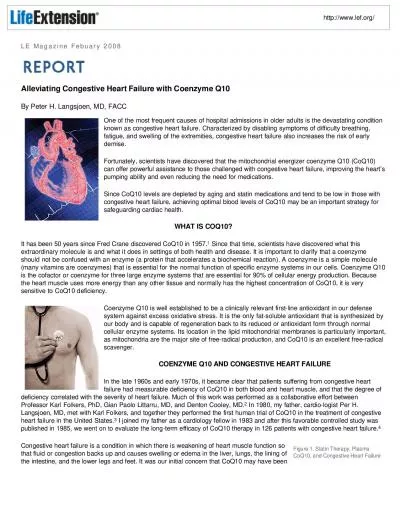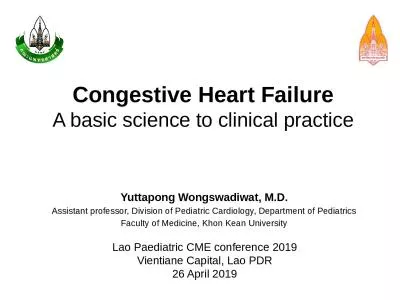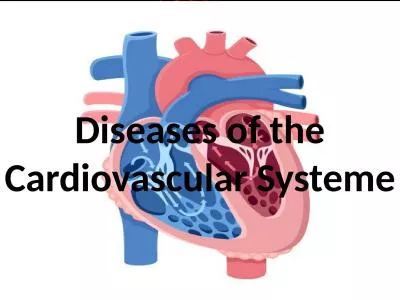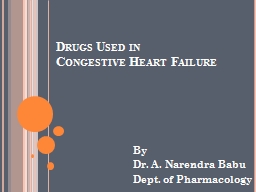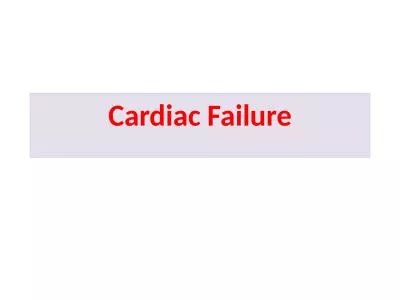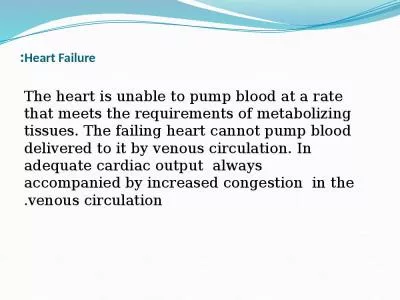PPT-CONGESTIVE HEART FAILURE
Author : olivia-moreira | Published Date : 2019-03-13
Dr Jamal Dabbas Interventional cardiologist amp internist 1 CONGESTIVE HEART FAILURE DEFINITION Congestive Heart Failure is a clinical syndrome in which the
Presentation Embed Code
Download Presentation
Download Presentation The PPT/PDF document "CONGESTIVE HEART FAILURE" is the property of its rightful owner. Permission is granted to download and print the materials on this website for personal, non-commercial use only, and to display it on your personal computer provided you do not modify the materials and that you retain all copyright notices contained in the materials. By downloading content from our website, you accept the terms of this agreement.
CONGESTIVE HEART FAILURE: Transcript
Dr Jamal Dabbas Interventional cardiologist amp internist 1 CONGESTIVE HEART FAILURE DEFINITION Congestive Heart Failure is a clinical syndrome in which the heart is unable to pump sufficient blood to meet the metabolic requirements of the body or can do so only at an elevated filling pressure. Gender differences and similarities. Lynette W. . Lissin. , MD FACC. Palo Alto Medical Foundation. April 21, 2012. Goals. Epidemiology and types of heart failure. Differences in incidence, clinical characteristics, prognosis in women vs. men. Joan Stadler, RDN. Robert J. Dole VAMC. 2015. What is heart failure?. The heart does not pump normally so…. Blood backs into the lungs. Fluids back into the lungs. Insufficient oxygen rich blood is available.. . and the Diagnosis of. Congestive Heart Failure . By Angela Thomas. Congestive Heart Failure. CHF is an acute or chronic inability of the heart to pump enough blood throughout the body to meet the demands of homeostasis. . Miami Valley Hospital. EMS Education. Objectives. Define Congestive Heart Failure. Define COPD. Review standing orders for CHF and COPD. Describe CPAP. Practice usage of CPAP. A congested heart. Congestive Heart Failure. Dr. . Naser. Ashraf . Department of Basic Medical Sciences . College of Medicine . Majmaah University . Objectives . List major drug groups used in treatment of heart failure . Explain mechanism of action of digitalis and its major effects . Heart Failure. David Kregenow, MD. Evergreen Health. Hospice and Palliative Care. Disclosures. I have no relevant financial conflicts of interest. My background is in Pulmonary and Critical Care Medicine, hence I think like a physiologist. Congestive Heart . Failure. Congestive Heart . Failure. Definition. Heart . failure (HF). is a condition caused by the . inability of the heart to pump sufficient blood to meet the metabolic needs of the body. Table of ContentsUnderstanding Heart FailureWhat is Congestive Heart Failure (CHF)?with Heart FailureHeart Failure ZonesHeart Failure medicationsLearning to read food labelsDaily life with Heart Failu Alleviating Congestive Heart Failure with Coenzyme Q10 By Peter H. Langsjoen, MD, FACC One of the most frequent causes of hospital admissions in older adults is the devastating condition known as co A basic science to clinical practice. Yuttapong. . Wongswadiwat. , M.D.. Assistant professor, Division of Pediatric Cardiology, Department of Pediatrics. Faculty of Medicine, . Khon. Kean University. Systeme. Functions of the cardiovascular system. 1-Ensure an adequate circulation of blood so that nutrients are delivered, waste products are removed. 2-a homeostatic environment will maintained at the organ and cellular level. By. Dr. A. Narendra . Babu. Dept. of Pharmacology. Introduction. Heart failure occurs when cardiac output is inadequate to provide the oxygen needed by the body. . The most common cause of heart failure is coronary artery disease. . . . failure of the heart to pump blood adequately. Cardiac failure is manifested by two ways---. 1) . C.O.. 2) . C.O.. . . . Heart failure can affect left side, right side or both sides. The most common causes of left-sided heart failure are:. 1- IHD 2- Systemic hypertension 3-Mitral or aortic valve disease, symptoms are related to pulmonary congestion and edema..
Download Document
Here is the link to download the presentation.
"CONGESTIVE HEART FAILURE"The content belongs to its owner. You may download and print it for personal use, without modification, and keep all copyright notices. By downloading, you agree to these terms.
Related Documents

